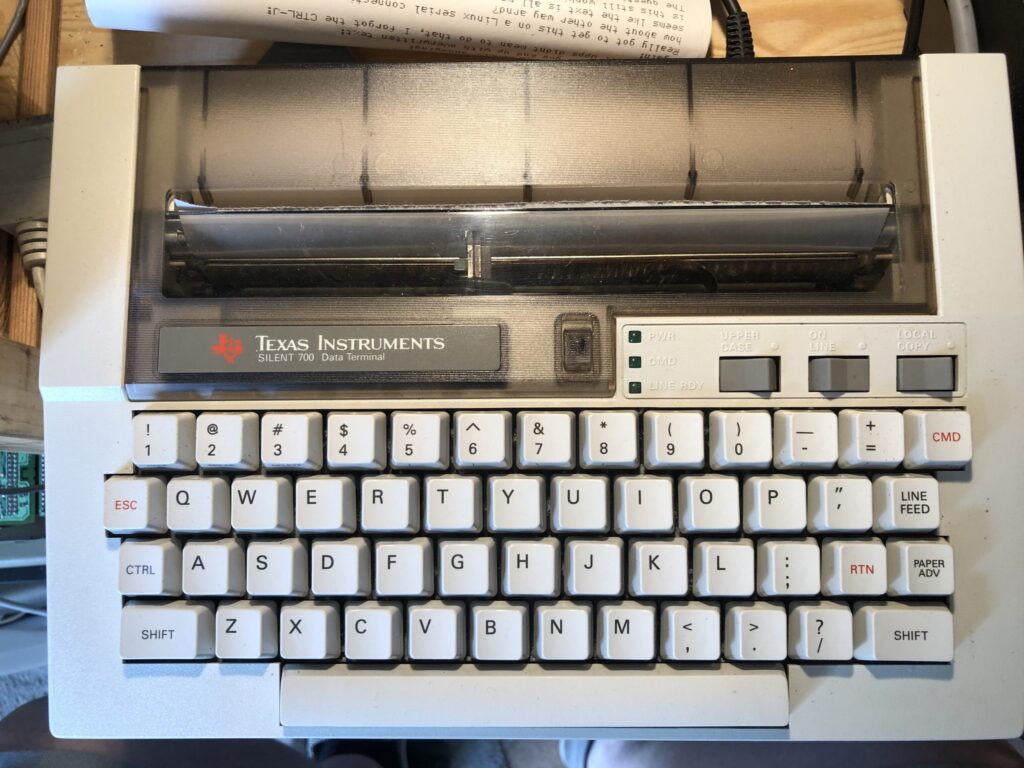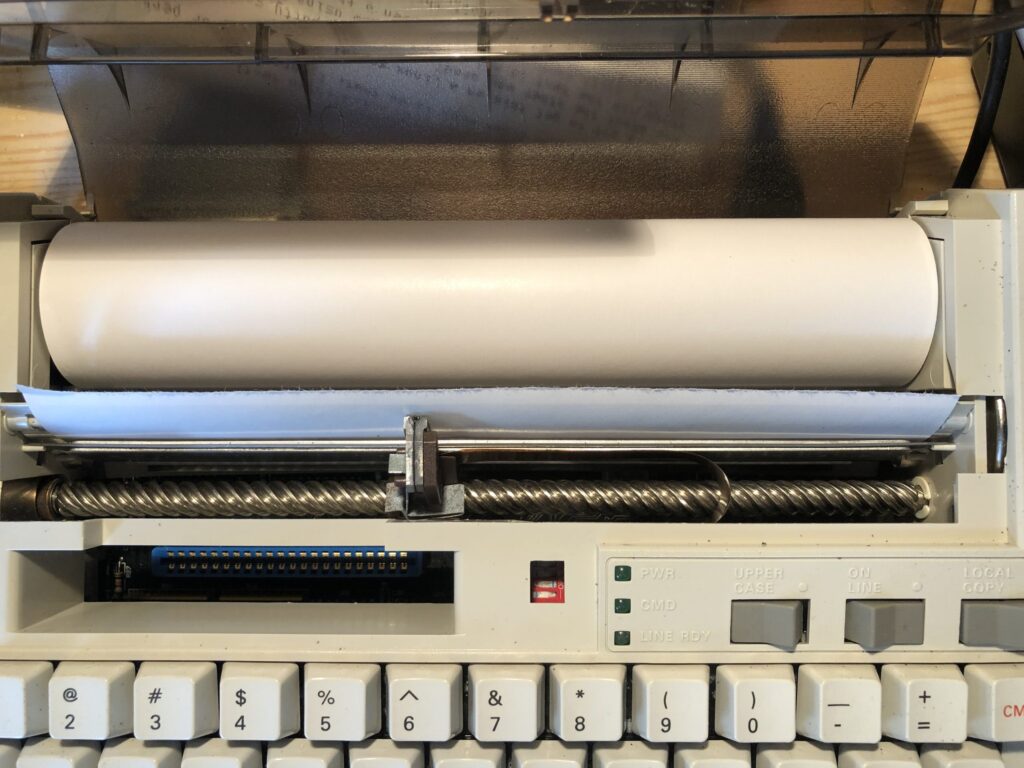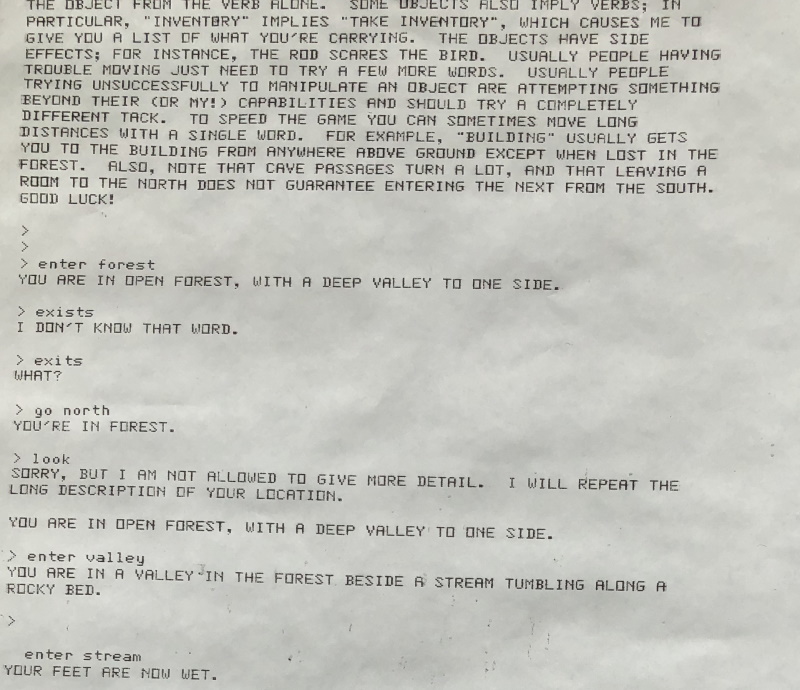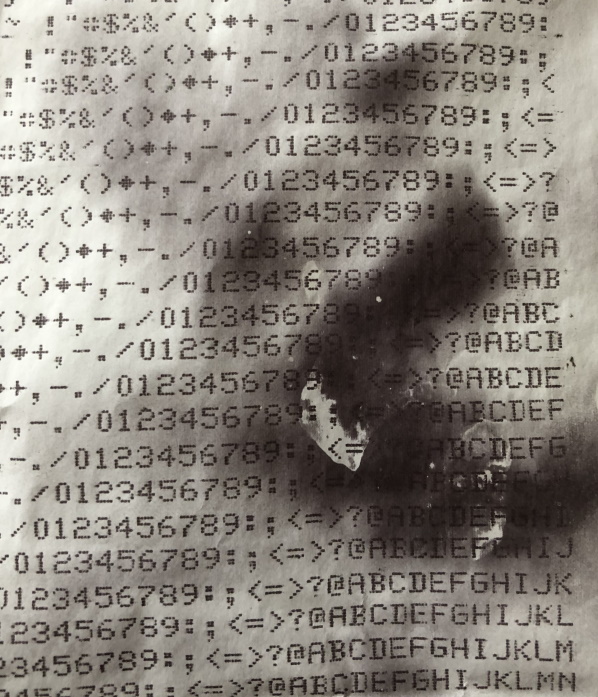My was an electronics engineer and as a kid he used to bring back all sorts of things for me to play around with. I was also well into anything that I could tinker around with, especially some of the wierd and wonderful things that would suddenly appear. One fond memory was when a Ti Silent 700 terminal turned up one day… It was massive, with a lovely keyboard and really quiet. I had an Amstrad 7-pin dot-matrix printer on my Oric machine (Centronics) but that was SERIUOSLY loud. The silent 700 was REALLY silent and I loved playing around with it:

Dad and I did connected it up to some things, using the serial interface and messed about a bit but it has limited uses at the time. Still… lights, switches and really cool! Fast forward to now and I didnt know I had such an itch that needed scratching… A Silent 703 appeared on eBay. That was a smaller unit (about half the size) with just a serial interface on it but that needed a new home… Come to daddy! I lay down a bit and got it… lovely!
So, the Silent 700 is a serial terminal with a thermal print head. A bit like an old fax machine. Because it is thermal it is really quiet with only the put-put of the carrage moving around. The distavatage of this is that the heating of the paper takes some time, meaing that they are very slow, by modern terms… Well slow by any terms to be honest. Also the serial parity is a bit annoying. After some serious messing about I did get it to work nice, here are my findings.
The quesiton you might be asking is “Why the heck would you want one?” Good question… Well, I do love retro hardware and to be honest there is not much more retro than an old school printer, especially using a technology that has been effectivly abaonded. Couple that with a serial terminal and HEY! Whats not to like?
So here is my new beast:

What are the specs for this beast? Ummm… Well right… I think the word is modest:
Serial connection: RS232 Female 25-pin D
Speed: 300 Baud (cough)
Data format: 7-bit with parity and 1 stop bit (more on the parity later)
Paper: Thermal paper supporting 80 or 132 column output
It will not break and speed records but then as already mentioend is the thermal silentness that is the thing here. So what can be done with it?
Firstly need to connect it up to something and see. Using my VERY lond null modem cable that I have had for years I plugged it into my desktop PC, with a USB serial dongle. That has a 9-pin D male connector. My null modem has 9-pin AND 25-pin on each end and I totally recommend that setup for ease of use. Both ends of this cable are female plugs which is great because you can connect anything to anything. The Silent 700 has a female 25-pin connector on the back but comes with a chunky 25-pin male to male connector cable, so thats all we need here:

To test it I used the serial program Putty on the PC but quickly found there are some limitasions with this so went to use RealTerm.
Parity
Parity is a method of detecting errors in transmission. When parity is used with a serial port, an extra data bit is sent with each data character, arranged so that the number of 1 bits in each character, including the parity bit, is always odd or always even. If a byte is received with the wrong number of 1s, then it must have been corrupted.
Most systems using RS232 use None as again most systems have hardware flow control checking. You are likely to see this type of notation 9600 8N1 which means 9600 Baud speed, 8 bit, no parity and 1 stop bit. Sadly the Silent 700 does not support that, so that makes things a little tricky. After a bit of messing about I settled on Odd parity, using the jumper settings on the Silent 700 to set this:

That is the red switchs you can see through that hole.
I managed to find a PDF manual for this system and the page that describes the switch settings. There is a plate on the back of the cover but it is not particually helpful. Anyway, here is the manual excert:

As mentioned before I decided to set this to ODD. The reason for this is that my BBC TERMULATOR ROM (See elsewhere on this site) supports this and 7-bit and I am confident that a modern Linux distro can support it also. Lets give it a go!

How about a clone of the Debian serial terminal VM that we used before in the BBC integration?

Lets pause here and review the settings in the Debian VM. There are two files that define the serial settings needed. These are:
It contains the files:
‘grub’ that resides on /etc/default/grub (Be careful just overwriting this…)
‘inittab’ that resices in /etc/inittab (again be careful with this!)
When changing settings you can issue the command:
systemctl restart serial-getty@ttyS0.service
To kick it back in again.
The important setting is in grub that defines: console=ttyS0,300o7
Be warning that when you reboot the VM you will have to wait an AGE for it to boot, because of the kernel boot messages. Doubltess this can be changed and I would welcome any comments about this. To be honest I quite liked seeing how much noise a modern Linux kernel would pump out to an old school terminal… Turns out it is ALOT!
With all this setup ready can we login? Well YEAH! Check this out:

Notice the double-type here, there is a switch on the Silent 700 that ‘local copy’ which is basically a local echo. Debian already returns the sent character so this can simply be turned off. Looked at the networking, types the contents of a txt file and then thought… Hey! Why not play a game? I had Colossal cave installed and fired it up! Cool!

Could this printed medium be the next ultra secure storage medium?

Well the speed of access it a problem I guess and if you leave it somewhere hot you will just get a black page!

Well I had fun with this and have plans for this little terminal. Designing a n Arduino based BASIC computer and hope that this will be one of the possible input peripherals, should be cool…